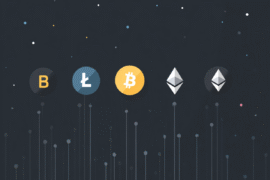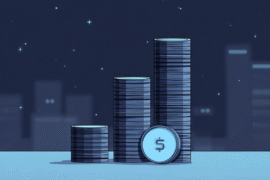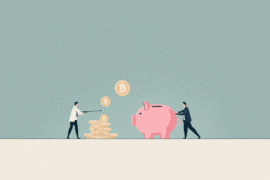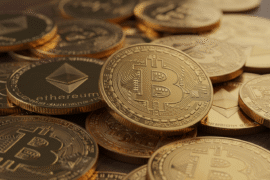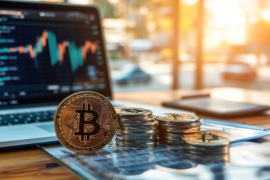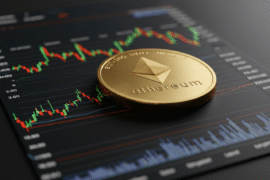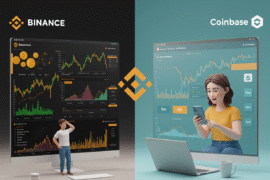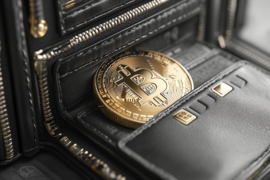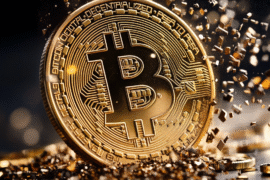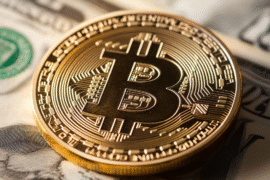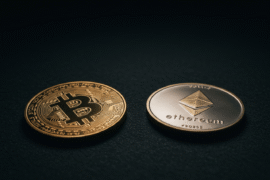This article may contain references to products or services from one or more of our advertisers or partners. We may receive compensation when you click on links to those products or services. Nonetheless, our opinions are our own.
The information presented in this article is accurate to the best of our knowledge at the time of publication. However, information is subject to change, and no guarantees are made about the continued accuracy or completeness of this content after its publication date.
Blockchain technology has evolved significantly since its beginning in cryptocurrency. What was a specialised innovation now powers financial systems worldwide, efficiently and securely. Payments, especially, have seen a tremendous impact. Since its creation, internal payment processes linked to Blockchain have changed. This transformation has enabled a new level of financial autonomy that traditional banking methods have not yet achieved.
From Entertainment to Everyday Use
The earliest signs of blockchain’s potential emerged in an unexpected place, the entertainment sector. Digital entertainment platforms handle a lot of microtransactions, which support popular slot games and other fast-paced digital experiences like live streaming services or real-time esports platforms. Blockchain offers speed and trust where the older systems have lagged. Players benefit from faster payments, instant confirmations, and transparent records in every transaction. This is also true for industries that move goods or send money overseas.
Blockchain proves ownership and removes unnecessary middle layers, making blockchain a useful infrastructure even outside entertainment. Its transparency improves oversight, allowing businesses to track assets and confirm product origins instantly, ensuring accuracy and accountability.
Outside entertainment, blockchain’s transparent systems now guide how businesses manage licensing deals and monetise creative work. Artists, freelancers, and developers can receive payments instantly, without relying on third-party processors that could take a large commission or even delay transactions.
Cutting Out the Middleman
Traditional payment systems depend on a chain of intermediaries. Banks, payment gateways, and clearinghouses all play a role, each charging a fee and adding friction. Blockchain strips much of that out. With decentralized ledgers, value can move directly from sender to receiver without relying on third parties to verify the transaction.
On many blockchain networks, settlement is nearly instant. Where traditional international transfers may take days, decentralized transactions can take seconds or minutes. The global remittance market (where fees can exceed 6%) shows how powerful that can be. If even a small portion of those transfers moves to a blockchain system, it would eliminate billions in annual fees.
Smart contracts then add another layer of efficiency. These self-executing agreements operate on “if/then” conditions coded into the blockchain. Once conditions are met, like delivery confirmation or payment release, the transaction finalizes automatically. Blockchain reduces the human error factor and eliminates disputes caused by delayed or lost paperwork.
The ability to remove manual intervention does not just save time; it builds trust. Businesses can now create automated financial flows that execute exactly as intended, regardless of where the parties are. Blockchain makes people feel safe and sure about their transactions, which helps build trust.
Voted "Best Overall Budgeting App" by Forbes and WSJ
Monarch Money helps you budget, track spending, set goals, and plan your financial future—all in one app.
Get 50% OFF your first year with code MONARCHVIP
The Rise of Stablecoins and Central Bank Experiments
Cryptocurrencies like Bitcoin first proved that blockchain could move money without banks, but their price volatility limited their use. A solution was found: stablecoins maintain a consistent value while retaining the benefits of blockchain.
Stablecoins offer many benefits for businesses. Companies use stablecoins for settlements and digital commerce. Companies like Circle (USDC) and Tether (USDT) dominate this market. Payment processors and financial institutions integrate with it and turn crypto-native assets into usable payment rails.
How Businesses Are Adopting Blockchain Payments
Industries are integrating blockchain into their payment architecture. Global corporations like PayPal, Visa, and Mastercard now support certain blockchain-based transactions and stablecoins; their involvement signals legitimacy and scalability.
For small and medium-sized enterprises (SMEs), blockchain enables low-cost international payments without requiring a global banking presence. Retailers use it to reduce chargeback fraud, while freelancers and contractors use crypto wallets to receive cross-border payments instantly and with fewer deductions.
Businesses are starting to use blockchain more naturally. Many merchants now accept digital payments, making it easier for people to spend their crypto in daily life. As that becomes normal, it will change how digital money is seen and used.
In emerging markets, blockchain-based payments fill a gap. Some Countries lack a robust banking system or affordable financial services. Mobile-based blockchain apps give users a way to send, receive, and store value safely without relying on local banks.
Companies like BitPesa (now AZA Finance) in Africa and Coins.ph in Southeast Asia have demonstrated how blockchain can deliver low-cost payment infrastructure in regions where traditional banks are scarce. These cases highlight how blockchain does not just serve high-tech users but also solves more practical issues in real-world economies. This shift shows how financial inclusion and innovation can advance together through accessible technology. As connectivity improves and transaction fees drop, blockchain adoption in daily life is expected to expand even further.
Environmental Considerations and New Consensus Models
A criticism of blockchain payments is energy consumption. Mining can require substantial energy consumption, raising environmental concerns.
New blockchain networks now use energy-saving systems like proof of stake and proof of authority. These models use far less energy while maintaining security and decentralization. Ethereum’s transition to proof-of-stake in 2022 reportedly reduced its energy use by more than 99%.
Some networks even integrate renewable-energy verification directly into their protocols. Systems are rewarding the miners or validators for using clean energy, turning sustainability into a measurable metric rather than an afterthought. Developers are experimenting with different carbon-offset models and hybrid systems that track their emissions on-chain, offering complete transparency.
Climate commitments are becoming stricter, and these energy innovations make blockchain a more sustainable option. This is appealing to businesses that aim to reduce their carbon footprint over the coming years. Enterprises are also beginning to measure the environmental impact of each transaction, helping them align digital transformation with sustainability goals. As regulations tighten, green blockchain infrastructure could become a competitive advantage rather than a technical preference.
The Road to Mainstream Adoption
To get the full benefit and potential from blockchain payments, regulation, scalability, and most importantly, user experience need to be given high priority. Regulation provides trust. Scalability ensures that networks can handle real-world transaction volumes without congestion. User experience turns complex crypto processes into simple, intuitive actions. Governments and industry leaders are now exploring frameworks that balance innovation with accountability, aiming to create global standards that protect users while promoting growth. Layer-2 solutions, sidechains, and interoperability protocols are already addressing scalability concerns.
User-friendly wallets and integrated payment gateways are improving accessibility across all sectors. Future developments suggest a world where blockchain payments operate quietly in the background, as the internet did for communication today. The technology has developed from being an innovation to an infrastructure. As more trust builds and technical barriers fall, blockchain will evolve into the foundation of how value moves worldwide. It will support the future of payments and shape what that future becomes. This shift will not happen overnight, but each upgrade brings blockchain closer to seamless everyday use. As awareness grows and real-world examples multiply, confidence in blockchain payments will keep expanding across borders and industries alike.

Reviewed and edited by Albert Fang.
See a typo or want to suggest an edit/revision to the content? Use the contact us form to provide feedback.
At FangWallet, we value editorial integrity and open collaboration in curating quality content for readers to enjoy. Much appreciated for the assist.
Did you like our article and find it insightful? We encourage sharing the article link with family and friends to benefit as well - better yet, sharing on social media. Thank you for the support! 🍉
Article Title: How Blockchain Is Reshaping Global Payment Systems
https://fangwallet.com/2025/11/04/how-blockchain-is-reshaping-global-payment-systems/The FangWallet Promise
FangWallet is an editorially independent resource - founded on breaking down challenging financial concepts for anyone to understand since 2014. While we adhere to editorial integrity, note that this post may contain references to products from our partners.
The FangWallet promise is always to have your best interest in mind and be transparent and honest about the financial picture.
Become an Insider
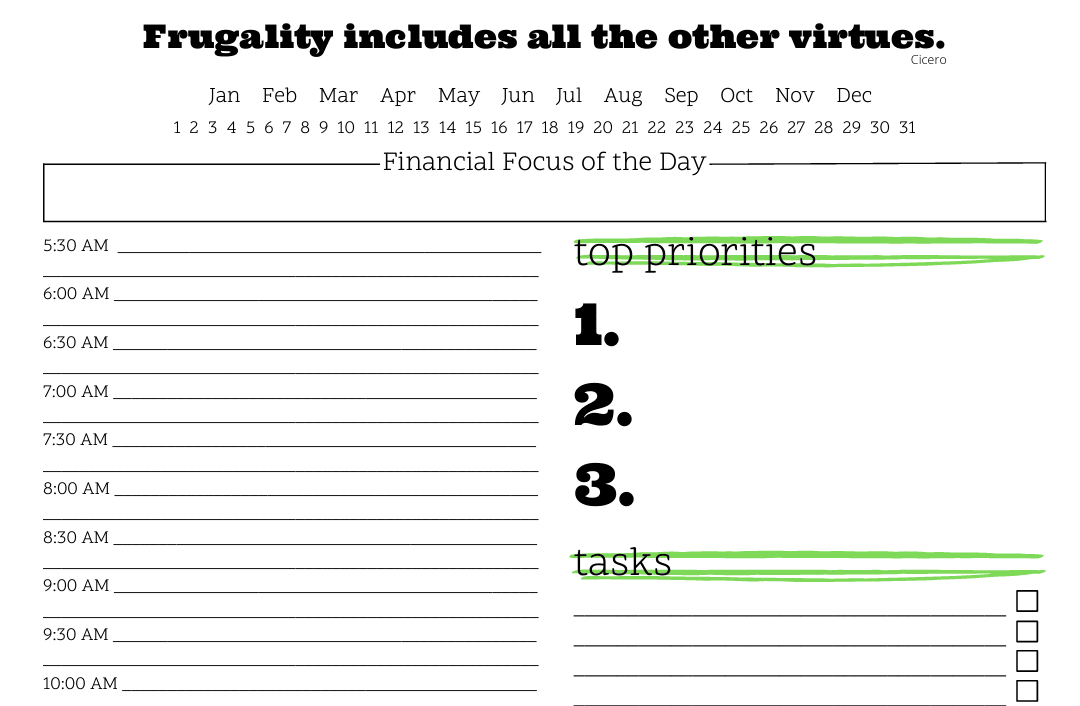
Subscribe to get a free daily budget planner printable to help get your money on track!
Make passive money the right way. No spam.
Editorial Disclaimer: The editorial content on this page is not provided by any of the companies mentioned. The opinions expressed here are the author's alone.
The content of this website is for informational purposes only and does not represent investment advice, or an offer or solicitation to buy or sell any security, investment, or product. Investors are encouraged to do their own due diligence, and, if necessary, consult professional advising before making any investment decisions. Investing involves a high degree of risk, and financial losses may occur including the potential loss of principal.
Source Citation References:
+ Inspo
There are no additional citations or references to note for this article at this time.




